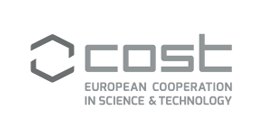Summary
A lack or ineffective treatments and vaccines for some diseases like malaria and cancer concerns and challenges public health issues nowadays to provide effective and efficiency therapy regimens toward class new classes of drugs with novel mechanisms of action. In 2020, there were an estimated 241 million cases of malaria worldwide, and the estimated number of deaths stood at 627,000. Because the fight against this disease is focused on controlling the Anopheles mosquito that transmits the parasite and on vaccination, many of these works have not advanced. Nevertheless, the recent approaches in chemoprevention make necessary the development of new alternatives in malaria treatment. Siderophores are low-molecular-weight secondary metabolites that function as iron chelators offer a viable alternative to face these clinical problems. Under iron-deficiency conditions, they are produced by a wide variety of microbes, allowing them to increase their iron uptake. The primary function of these compounds is the environmental iron scavenging and its transport into the cytosol. Depending on their functional group, siderophores are classified into hydroxamate, catecholate, phenolate, carboxylate, and mixed types. They have achieved great importance in recent years due to their medical applications as antimicrobial, antimalarial, or anticancer drugs, vaccines, and drug-delivery agents.
To study the molecular and structural classes of siderophores that form complexes with Fe2+ and thus, may affect inhibition of metabolic processes in parasites. Siderophores are low-weight, high-affinity iron chelating molecules, produced as secondary metabolites. They detect sufficient levels of iron supply for infection by the Plasmodium falciparum parasite and respond as inhibitor to the essential metabolic processes of depriving the parasite of iron as a control measure for malaria. Iron acquisition by bacterial siderophores as virulence factor requires to target the potential inhibition sites (e.g., siderophore biosynthesis, outer membrane receptors, iron release enzymes, and signal receptors). The iron acquisition process starts recognizing the Fe3+ complexes by cell surface receptors and ends in reduction of Fe3+ into Fe2+ form, which then enters the cytoplasmic metabolic path, i.e., "plasmocidin" activity of endocellular parasites, in particular those contained in red blood cells, and is not reversed by iron. Despite many advances, the exact role of Fe acquisition systems in vivo and their effects in pathogenic virulence remain to be determined.
COST (European Cooperation in Science and Technology) is a funding agency for research and innovation networks. The COST ACTIONS help connect research initiatives across Europe and enable scientists to grow their ideas by sharing them with their peers. This boosts their research, career and innovation.
One Health drugs against parasitic vector borne diseases in Europe and beyond
OneHealthdrugs
24/10/2022
23/10/2026
27/05/2022
Download file
Maria Paola Costi
Anabela Cordeiro da Silva
Maria Cristina Notarsanto
Maria Esposito and Laura Leonardi


